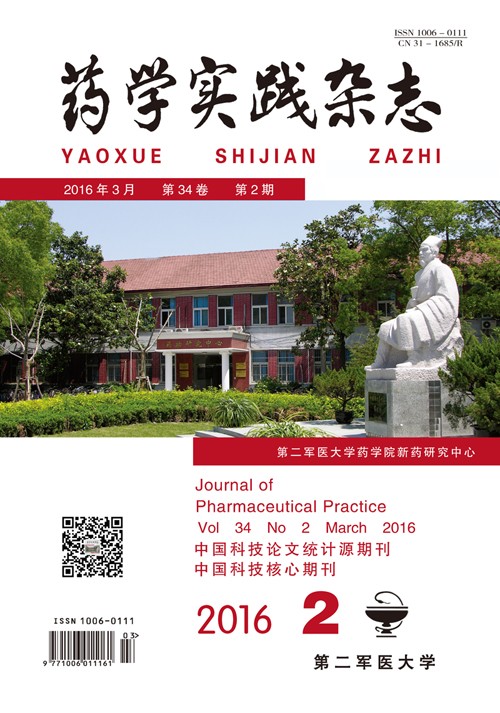|
[1]
|
Guinea J. Global trends in the distribution of Candida species causing candidemia[J]. Clin Microbiol Infect, 2014, 20(Suppl 6):5-10. |
|
[2]
|
Cottier F, Pavelka N. Complexity and dynamics of host-fungal interactions[J]. Immunol Res, 2012, 53(1-3):127-135. |
|
[3]
|
Romani L, Zelante T, Palmieri M, et al. The cross-talk between opportunistic fungi and the mammalian host via microbiota's metabolism[J]. Semin Immunopathol, 2015, 37(2):163-171. |
|
[4]
|
Mallick EM, Bennett RJ. Sensing of the microbial neighborhood by Candida albicans[J]. PLoS Pathog, 2013, 9(10):e1003661. |
|
[5]
|
Staniszewska M, Bondaryk M, Pilat J, et al. Virulence factors of Candida albicans[J]. Przegl Epidemiol, 2012, 66(4):629-633. |
|
[6]
|
Zhu W, Filler S G. Interactions of Candida albicans with epithelial cells[J]. Cell Microbiol, 2010, 12(3):273-282. |
|
[7]
|
Hoyer LL. The ALS gene family of Candida albicans[J]. Trends Microbiol, 2001, 9(4):176-180. |
|
[8]
|
Sun N, Fonzi W, Chen H, et al. Azole susceptibility and transcriptome profiling in Candida albicans mitochondrial electron transport chain complex I mutants[J]. Antimicrob Agents Chemother, 2013, 57(1):532-542. |
|
[9]
|
Prasad R, Rawal MK. Efflux pump proteins in antifungal resistance[J]. Front Pharmacol, 2014, 5:202. |
|
[10]
|
Ene IV, Adya AK, Wehmeier S, et al. Host carbon sources modulate cell wall architecture, drug resistance and virulence in a fungal pathogen[J]. Cell Microbiol, 2012, 14(9):1319-1335. |
|
[11]
|
Lorenz MC, Fink GR. The glyoxylate cycle is required for fungal virulence[J]. Nature, 2001, 412(6842):83-86. |
|
[12]
|
Cheah HL, Lim V, Sandai D. Inhibitors of the glyoxylate cycle enzyme ICL1 in Candida albicans for potential use as antifungal agents[J]. PLoS One, 2014, 9(4):e95951. |
|
[13]
|
Kemsawasd V, Viana T, Ardo Y, et al. Influence of nitrogen sources on growth and fermentation performance of different wine yeast species during alcoholic fermentation[J]. Appl Microbiol Biotechnol, 2015. |
|
[14]
|
Gagiano M, Bauer F-F, Pretorius IS. The sensing of nutritional status and the relationship to filamentous growth in Saccharomyces cerevisiae[J]. FEMS Yeast Res, 2002, 2(4):433-470. |
|
[15]
|
Buu LM, Chen YC. Impact of glucose levels on expression of hypha-associated secreted aspartyl proteinases in Candida albicans[J]. J Biomed Sci, 2014, 21:22. |
|
[16]
|
Han TL, Cannon RD, Villas-B? as S-G. The metabolic basis of Candida albicans morphogenesis and quorum sensing[J]. Fungal Genet Biol, 2011, 48(8):747-763. |
|
[17]
|
Brown AJ, Brown GD, Netea MG, et al. Metabolism impacts upon Candida immunogenicity and pathogenicity at multiple levels[J]. Trends Microbiol, 2014, 22(11):614-622. |
|
[18]
|
Vieira N, Casal M, Johansson B, et al. Functional specialization and differential regulation of short-chain carboxylic acid transporters in the pathogen Candida albicans[J]. Mol Microbiol, 2010, 75(6):1337-1354. |
|
[19]
|
Kitahara N, Morisaka H, Aoki W, et al. Description of the interaction between Candida albicans and macrophages by mixed and quantitative proteome analysis without isolation[J]. Amb Express, 2015, 5(1):127. |
|
[20]
|
Ramirez MA, Lorenz MC. Mutations in alternative carbon utilization pathways in Candida albicans attenuate virulence and confer pleiotropic phenotypes[J]. Eukaryot Cell, 2007, 6(2):280-290. |
|
[21]
|
Sellam A, van het Hoog M, Tebbji F, et al. Modeling the transcriptional regulatory network that controls the early hypoxic response in Candida albicans[J]. Eukaryot Cell, 2014, 13(5):675-690. |
|
[22]
|
Dunkel N, Biswas K, Hiller E, et al. Control of morphogenesis, protease secretion and gene expression in Candida albicans by the preferred nitrogen source ammonium[J]. Microbiology, 2014, 160(Pt 8):1599-1608. |
|
[23]
|
Ramachandra S, Linde J, Brock M, et al. Regulatory networks controlling nitrogen sensing and uptake in Candida albicans[J]. PLoS One, 2014, 9(3):e92734. |
|
[24]
|
Yan L, Zhang JD, Cao YB, et al. Proteomic analysis reveals a metabolism shift in a laboratory fluconazole-resistant Candida albicans strain[J]. J Proteome Res, 2007, 6(6):2248-2256. |
|
[25]
|
Xu Y, Sheng F, Zhao J, et al. ERG11 mutations and expression of resistance genes in fluconazole-resistant Candida albicans isolates[J]. Arch Microbiol, 2015. |







 DownLoad:
DownLoad: